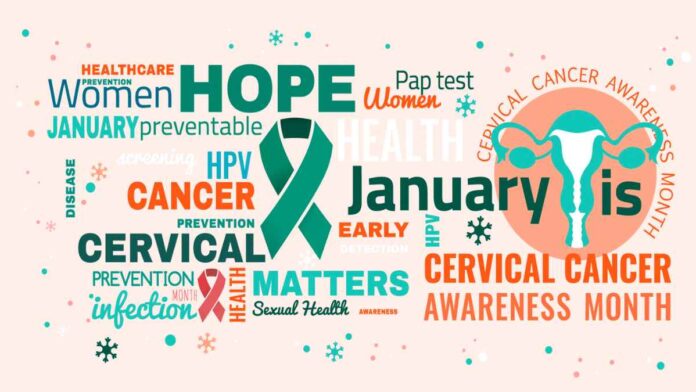A well-balanced, nutrient-dense diet can also include antioxidants to help the immune system fight HPV, which can be caused by exposure to the human papillomavirus (HPV) infection. Cervical cancer screening is recommended earlier in life and more regularly in individuals at high risk of cervical cancer than in those at moderate risk.
Cervical cancer cannot be avoided entirely. However, taking the human papillomavirus (HPV) vaccination and undergoing routine testing can significantly reduce one’s risk. Making certain dietary changes, stopping smoking, and employing barrier protection practises during sexual activity can all assist to reduce the risk.
If available, the HPV vaccine and routine testing are the two most important things you can do to prevent cervical cancer. The most common kind of cervical cancer is caused by precancerous changes, and there are ways to prevent it from advancing. Pre-malignancies can be discovered and treated before they advance to invasive cancers in the first phase, and they can also be prevented in the second.
Cervical screening is the detection of cervical pre-cancers. Cervical cancer screening tests are a tried-and-true means of avoiding the disease. Screening is the process of testing for conditions that may cause cancer and detecting pre-tumors before they grow into invasive cancers. The human papillomavirus (HPV) test and the Pap test are two of the specific tests used in cervical cancer screening (or Pap smear). These tests are conducted using the same procedure. A medical professional gently brushes or scrapes the cervix using a specific device to collect cells for examination. If a pre-cancer is detected, it can be treated and prevented from progressing to cervical cancer.
The HPV test detects infections caused by high-risk HPV strains (16 and 18), which are more likely to cause cervical pre-malignancies and cancers. Some HPV tests are approved for use as main HPV testing, while others are approved as co-tests. You may obtain a certain kind more frequently depending on the test alternatives available in your area.
The Pap test, often known as a smear, is a method that takes cervix cells and examines them under a microscope in a lab to screen for cancer and pre-cancer. It is critical to understand that the majority of invasive cervical cancers are detected in women who do not receive Pap tests on a regular basis. A Pap test may be included in a pelvic examination, although not all pelvic examinations do.
The results of the HPV test, together with the results of prior tests, define your risk of developing cervical cancer. If the test findings are positive, extra follow-up sessions, more cancer or pre-cancer tests, and, in some cases, surgery to treat any pre-cancers may be required.
It is critical to discuss the specifics of your screening test findings with your healthcare practitioner in order to completely understand your risk of developing cervical cancer and the best course of action.
Preventing Pre-Cancers and Cancer: What You Can Do
Depending on your age, general health, and personal risk for cervical cancer, there are numerous things you may take to avoid pre-cancers and scenarios that lead to pre-cancers.
An HPV vaccination: There are vaccinations available to protect children and adolescents from certain HPV infections. These immunisations provide protection against the HPV strains most often associated with cancer, as well as types that can cause anal and genital warts. These immunisations only serve to prevent HPV infection; they do not treat an existing infection. As a result, HPV vaccines should be given before a person is exposed to HPV (such as through sexual contact).
Limit your HPV exposure: HPV is spread from person to person by skin-to-skin contact with an infected body part. Even while vaginal, anal, and oral sex can transfer HPV during skin-to-skin contact, sex is not required for the virus to spread. All that is necessary is skin-to-skin contact with an HPV-infected body part. As a result, the virus can spread without the necessity for sexual activity. Even hand-to-genital contact can result in the spread of a genital infection. Furthermore, it appears that HPV infection can spread from one body location to another. As a result, an infection might start in the cervix and spread to the vagina and vulva.
Use a condom: While condoms (“rubbers”) can provide some HPV protection, they cannot completely prevent infection. Condoms do not provide complete protection against HPV since they do not cover all body areas that may be impacted, such as the genital or anal skin. Condoms, on the other hand, assist protect against HIV and numerous other STDs while also providing some protection against HPV.
Smoking should be avoided: Quitting smoking is another important step in decreasing your risk of cervical cancer and pre-cancer. Tobacco use can weaken the immune system, making it more difficult for the body to eliminate cancer cells. These poisons can also change or damage a cell’s DNA, resulting in the development of a tumour. Smoking in public and having a smoking spouse can both increase the risk of cancer.



